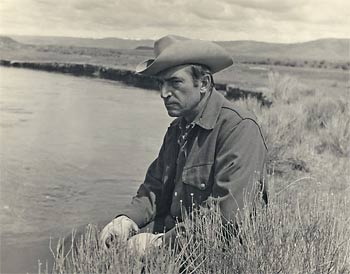Unforced Variations: Dec 2025
2 weeks ago
Posted by Chris M Monday, May 24, 2010
Posted by Chris M Friday, May 21, 2010
Posted by Chris M Monday, May 17, 2010
Posted by Chris M Monday, May 10, 2010

Posted by Chris M Monday, May 3, 2010
 The defining paradigm shift in 20th century earth science is clearly the widespread acceptance of plate tectonics. One of the most important lines of evidence helping to convince scientists were the existence of magnetic stripe anomalies in the rocks of the oceans. The above map, from the classic Vines & Matthews paper from 1964, shows two profiles [Atlantic and Indian Oceans]. The black is the bathymetry and the black line is the magnetic field anomaly
The defining paradigm shift in 20th century earth science is clearly the widespread acceptance of plate tectonics. One of the most important lines of evidence helping to convince scientists were the existence of magnetic stripe anomalies in the rocks of the oceans. The above map, from the classic Vines & Matthews paper from 1964, shows two profiles [Atlantic and Indian Oceans]. The black is the bathymetry and the black line is the magnetic field anomalyPosted by Chris M Monday, April 26, 2010


Posted by Chris M Sunday, April 25, 2010
Posted by Chris M Monday, April 19, 2010

Posted by Chris M Saturday, April 17, 2010
 The topic of this month's Accretionary Wedge is "Geological Heroes".
The topic of this month's Accretionary Wedge is "Geological Heroes".The presence of the large meanders, however, poses several problems. First, how and when were such meanders initiated? Second, why do the appear to be unusually large? Third, how are they maintained as the stream corses the bedrock? Was the meander form inherited from an earlier time when the river flowed at a higher level, perhaps on a dispositional or erosional surface no longer evident in the present topography? Or do the large meanders suggest that at one time much larger volumes of water were carried by the Susquehanna? If so, did these larger rivers provide greater energy with which to mold the larger bend in bedrock? [Leopold et al. 1964]
 Leopold had a long and varied career, with almost 200 publications. These range the spectrum from remote field work on the Colorado River in the Grand Canyon, to flume work in the laboratory. He was at times the chief hydrologist of the USGS, chair of the geology department at University of California-Berkley, and president of the Geological Society of America.
Leopold had a long and varied career, with almost 200 publications. These range the spectrum from remote field work on the Colorado River in the Grand Canyon, to flume work in the laboratory. He was at times the chief hydrologist of the USGS, chair of the geology department at University of California-Berkley, and president of the Geological Society of America.Speaking of the Persians who dominated Asia Minor in the 5th century B.C., Herodotus said, “They never defile a river with the secretions of their bodies, nor even wash their hands in one; nor will they allow others to do so, as they have a great reverence for rivers.” It is the last phrase that deserves our attention. The river is like an organism; it is internally self-adjusting. It is also resilient and can absorb changes imposed upon it, but not without limit. The limit beyond which a river cannot adjust is well illustrated by some of the effects of our national program of channelization, in which we have already dredged, straightened, channelled, revetted, trained, and “improved” more than 16,500 miles of river channels in the United States, quite apart from the thousands of reservoirs already built.....Most of his publications can be downloaded from the Virtual Luna Leopold Project
Man’s engineering capabilities are nearly limitless. Our economic views are too insensitive to be the only criteria for judging the health of the river organism. What is needed is a gentler basis for perceiving the effects of our engineering capabilities. This more humble view of our relation to the hydrologic system requires a modicum of reverence for rivers. [Leopold 1977]
Posted by Chris M Thursday, April 8, 2010




Posted by Chris M Tuesday, January 5, 2010
"We are now able to tell almost exactly the age of this earth," said Prof. William Morris Davis of Harvard in a lecture at the Lowell Institute. "It has existed 60,000,000 not 100,000,000 years. We are able to tell this by an examination of the cliffs in Arizona and Utah, where the time taken to lay down deposits can be easily computed."Sure he was off by roughly 2 orders of magnitude, but he was on the front page!